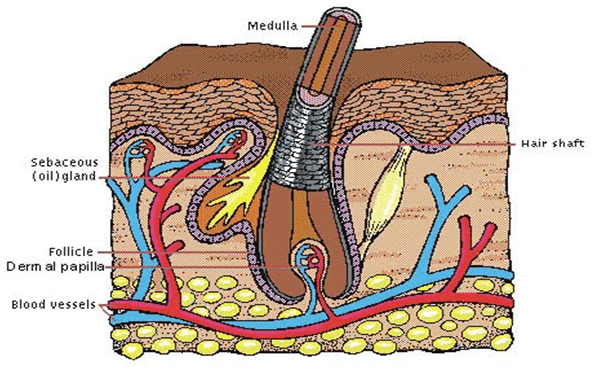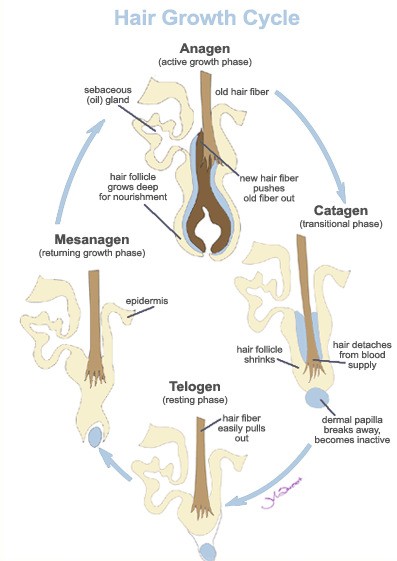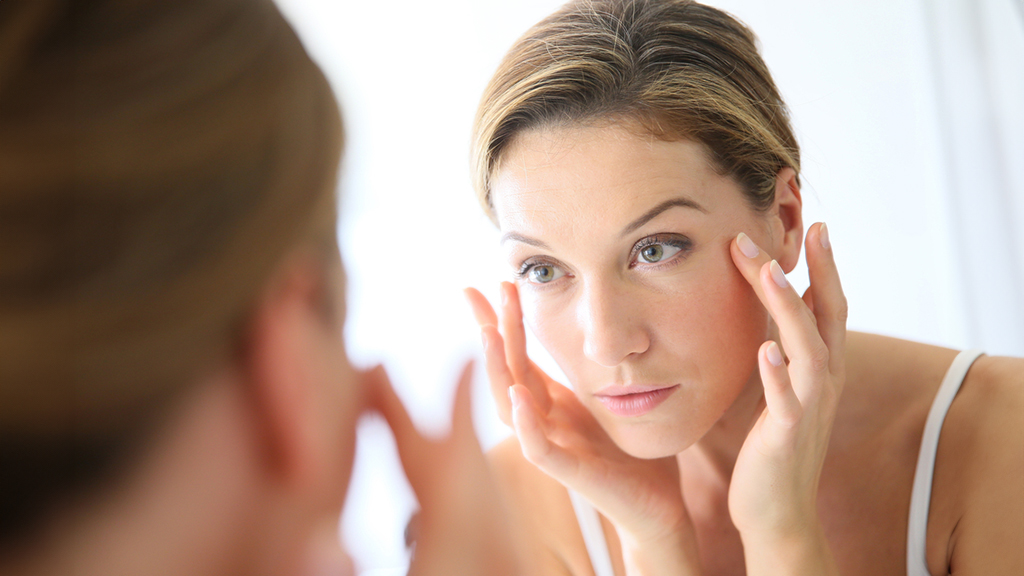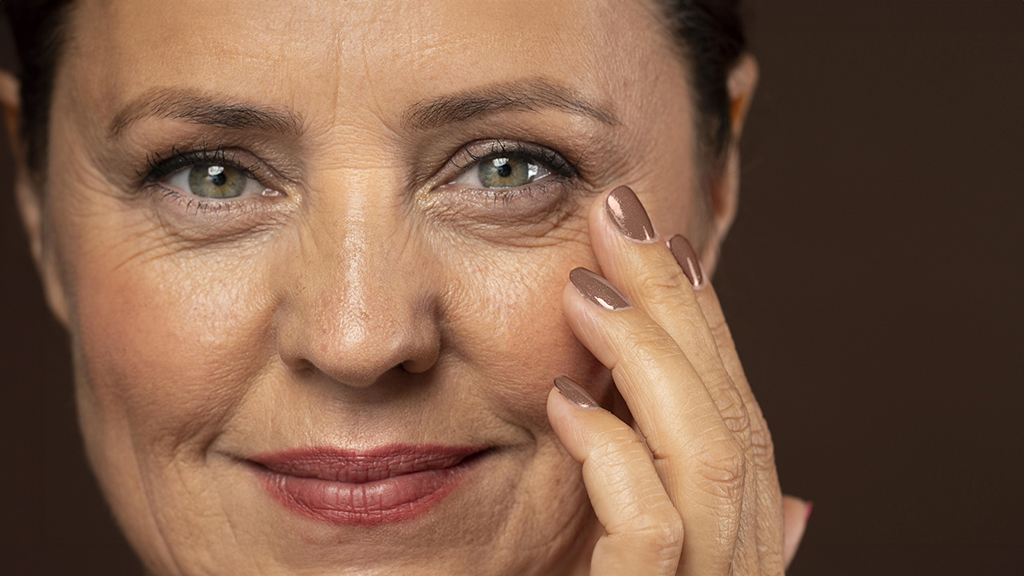Hair Structure & Growth Cycle
Hair Structure
Hair is composed of strong structural protein called keratin. This is the same kind of protein that makes up the nails and the outer layer of skin.
Each strand of hair consists of three layers.
- An innermost layer (or medulla) which is only present in large thick hairs.
- The middle layer, known as the cortex. This provides strength and also the colour and texture of hair.
- The outermost layer is known as the cuticle. This is thin and colourless and serves as protector of the cortex.
Structure of the hair root
Below the surface of the skin is the hair root, which is enclosed within a hair follicle. At the base of the hair follicle is the dermal papilla. The dermal papilla is fed by the bloodstream which carries nourishment to produce new hair. The dermal papilla is a structure very important to hair growth because it contains receptors for male hormones and androgens. Androgens regulate hair growth, and in the scalp hair of individuals who are genetically predisposed to this type of hair loss, may cause the hair follicles to become progressively smaller and the hairs to become finer.

The Hair Growth Cycle
Hair follicles grow in repeated cycles. One cycle can be broken down into three phases.
- Anagen – Active growth phase
- Catagen – Transition phase
- Telogen – Resting phase

Each hair passes through these phases independent of the neighbouring hairs.
The hair growth cycles play a major role in your hair removal treatment. Excessive hair growth can be caused by a variety of reasons: heredity, stress, medication, and hormonal changes. In women, puberty, pregnancy and menopause play important parts in determining hair growth. Many researchers say that there can be as many as 2500 hair follicles per square inch, although less than 100 hairs will be showing at any given time.
For these reasons, during treatment, it is extremely difficult to predict the exact length of time before there is no further hair growth in the treatment area.
Anagen Phase – active growth phase
This is the “perfect” stage for treatment. The hair is grown and it is visible above the skin and can be treated. The hair shaft is attached to the papilla, thus enabling the laser to attack the melanin in the shaft and disable the papilla. This period for facial and body hair can be as long as two to three weeks.
Catagen Phase – transitional phase
At the end of the Anagen phase the hairs enters into a Catagen phase. During the Catagen phase the hair follicle shrinks to about 1/6 of the normal length. The lower part is destroyed and the dermal papilla breaks away to rest below. At this stage the growth process has reversed itself and the hair is preparing to shed (this is not the same shedding process as post-laser treatment). It is still possible to treat with laser since a follicle treated in the Catagen stage will still produce another hair. This stage is particularly variable and can be as little as two days.
Telogen Phase – resting phase
The “resting phase” is the final stage. The hair is neither developing nor growing. It cannot be treated during this stage, as it is not usually visible above the skin. The hair shaft is fully detached from the papilla, for laser treatment not allowing the laser to attack the melanin in the shaft and disable the papilla. This unpredictable phase can be as short as a few days or as long as a few years.
At the end of the Telogen phase the hair follicle re-enters the Anagen phase (Mesanagen). The dermal papilla and the base of the follicle join together again and a new hair begins to form. If the old hair has not already been shed the new hair pushes the old one out and the growth cycle starts all over again.
For details about procedures and treatments or for a consultation, advice and prices from our Dubai clinic please call +971 4 431 2396 or use our online form.


